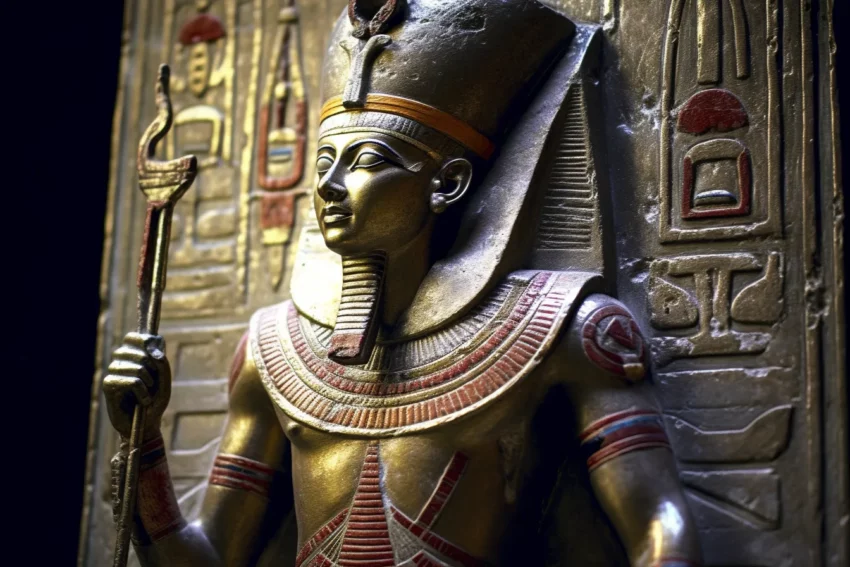Introduction to Seti I
Menmaatre Seti I, also known as Sethos I in Greek, was the second pharaoh of the Nineteenth Dynasty of Egypt. He ruled from approximately 1294 BC to 1279 BC. Seti I was the son of Ramesses I and Sitre, and the father of the famous Ramesses II. His name, ‘Seti’, means “of Set”, indicating his consecration to the god Set, also known as Sutekh or Seth.
Get your dose of History via Email
Ascension and Names
Upon becoming pharaoh, Seti I adopted the prenomen “Menmaatre,” which translates to “Established is the Justice of Re.” His birth name, “Sety Merenptah,” means “Man of Set, beloved of Ptah.” Although Manetho mistakenly credited him as the founder of the 19th Dynasty and proposed a 55-year reign, evidence supports a much shorter period.
Reign and Military Campaigns
Seti I’s reign followed the social upheavals caused by Akhenaten’s religious reforms. His primary objectives were to restore order and reaffirm Egypt’s sovereignty over Canaan and Syria. These territories faced threats from the Hittite state. Although Seti I did not eliminate the Hittite threat, he successfully reclaimed most disputed territories and concluded his campaigns victoriously.
Architectural Contributions
Seti I initiated significant architectural projects, including the construction of a funerary temple in Qurna and a white limestone temple in Abydos. These sites featured large scenes depicting his military successes. His capital was Memphis, and although overshadowed by his son Ramesses II, Seti was regarded as a great king.
Reign Length Controversy
Seti I’s reign is often debated among scholars. His highest attested date is Year 11, leading some to suggest his reign lasted only 11 years. This theory is supported by the unfinished state of many monuments and the rapid completion of these projects by Ramesses II early in his reign.
Military Achievements
In the first decade of his reign, Seti I led successful military campaigns in western Asia, Libya, and Nubia. His efforts are well-documented on the north exterior wall of the Karnak Hypostyle Hall and several royal stelas. Notably, he captured the Syrian town of Kadesh, a significant achievement, although the town later reverted to Hittite control.
Burial and Tomb
Seti I’s tomb, KV17, located in the Valley of the Kings, is the longest and deepest of all New Kingdom royal tombs. Discovered in 1817 by Giovanni Battista Belzoni, it was the first to feature decorations on every chamber and passageway. Seti’s mummy, found in 1881, was remarkably well-preserved and revealed that he died in his late thirties or early forties.
Conclusion
Seti I’s legacy is marked by his efforts to stabilize Egypt and his architectural contributions. Despite the brevity of his reign, his impact on Egypt’s history remains significant, setting the stage for the illustrious reign of his son, Ramesses II. His achievements in both governance and monument-building demonstrate his importance as a pharaoh of the New Kingdom.

